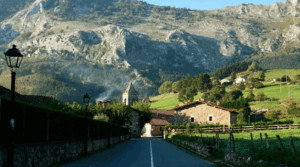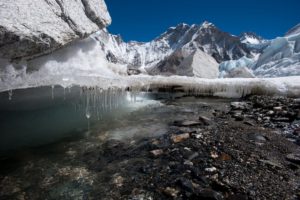The Changing Chinese Traveler

Jens Thraenhart
The Chinese middle class is already larger than the entire population of the United States. In fifteen years, the Chinese middle class will reach 800 million, from 300 million today. Over the next five years, affluent Chinese consumers will grow from 4 million to 20 million. It has changed, and will continue to change, the dynamics of the world we live in, and have huge impacts on the global travel and tourism industry.
Chinese demand for international travel is still young. But it is expected to grow by 17 percent annually over the next decade, driven by rising incomes and aspirations. There will be an average of 25 million first-time Chinese travelers every year, or 70,000 every day, for the next 10 years. International travel from China would become a major source of growth for providers in the destination countries. An increasing number of second and multiple- time Chinese visitors are more likely to travel independently, and not part of a group, meaning that they have a greater choice of timing and destinations. They have the opportunity to explore ‘off the beaten track’ venues and can look for holidays and activities that suit their personal interests.
The rise of Chinese Tourism has gotten the attention of a lot of travel, tourism, and hotel companies. The big U.S. hotel chains such as Starwood, Hilton, Marriott, and Inter-Continental have announced programs designed for Chinese tourists. These include adding popular Chinese dishes to full-service restaurant menus (including a traditional Chinese breakfast), featuring one or more Chinese television stations in the guestrooms, and introducing guestroom amenities such as slippers, tea kettles, and a selection of Chinese teas. Some hotels have also brought on a front desk concierge who speaks fluent Mandarin.
With all that said, the start of the second wave of China’s outbound tourism, will change the Chinese tourists as we know them today. The “New Chinese Tourists”, knowledgeable, sophisticated, technology-savvy and predominantly below 45 years of age, are entering the scene. New Chinese tourists look for deeper experiences and closer contact with local host populations during their self-organized trips. Earlier they took photos of themselves in front of the Sydney Opera House or the Eiffel Tower, but are now drawn more to new places and activities. New Chinese tourists offer an increased chance for destinations and tourism service providers off the beaten track to get a piece of the Chinese outbound market.
Many travel brands are trying to capture the attention of this very valuable new customer segments, but not without challenges and disappointments, due to various reasons.
First, the way many Chinese consumers are finding out about new destinations and travel services, such as hotel or cruise brands, is via the Internet. With over 500 million Internet users in China in December 2011, more than 80% of Chinese travelers research and educate themselves about destinations and brands online.
Second, unlike in the west, most of the money in China belongs to people who are younger than 45. Because of the Cultural Revolution in the 1960s and ’70s, people older than 45 generally aren’t well educated, live in government subsidized housing, and have spent the bulk of their careers in state-owned enterprises. The younger generation is better educated and is more likely to work in private firms, including foreign-invested enterprises. In addition, the fastest growing millionaires are in third, fourth, and fifth tier cities (including Dalian, Chengdu, Xiamen, Kunming, Nanning, etc.), and about 50% of the wealthy were not classified as wealthy 4 years ago. 70% of them are NOT living in the four biggest cities (Shanghai, Beijing, Guangzhou, and Shenzhen), and 35% are NOT living in first or second tier cities.
Third, a structural change is happening in the way Chinese travel. A recent study by the Boston Consulting Group revealed that 95% of Chinese tourists are unsatisfied with the current travel products and services, both domestic and outbound. While still group package deals are chosen among most middle class, especially those not from first tier cities who have mixed feelings of travelling abroad – those who are a little fearful due to food and language difficulties – but full of anticipation for the lower-taxed luxury goods they are likely to amass.
Post-80s and 90s young adults are not following a tour guide’s flag with matching red caps; there is a rise in independent, self-organized travelling, albeit still in a small group, interested in experiencing foreign cultures, reflecting on it with their own education and perspectives.
In many ways, China is still “an emerging economy” with marketers still unsure of how to target these new consumers, and cracking China’s consumer market is easier said than done—and there have been some notable stumbles. U.S. home-improvement giant Home Depot shut down five of its 10 stores since entering the market in 2006, while Best Buy , the world’s largest consumer electronics retailer, closed all of its branded stores in China this year.
The incomes of Chinese in second-, third-, and fourth-tier cities rising resulting in a change in consumption patterns that “will drive market dynamics in unprecedented and unpredictable ways.” Chinese consumers are at the forefront of tech and digital trends and are greatly increasing their use of computers and mobile phones to research and purchase. Additionally, Chinese consumers are increasingly being influenced by digital and social media marketing. Ninety per cent of respondents to a 2011 Forbes survey, which was comprised of more than 300 China-based senior executives, said that digital and mobile marketing are a critical part of the mix for reaching Chinese consumers, especially the younger and affluent demographic.
Understanding the new Chinese Tourist, the changing demographics and consumer behaviour, is critical to be successful in China. ChinaTravelTrends.com, the media and strategy consulting division of award-winning digital marketing company Dragon Trail interactive, has just published the 2012 Year of the Dragon edition of the “Essential China Travel Trends Guide”, which can now be downloaded for free at www.ChinaTravelTrendsBook.com. The book was produced in partnership with PATA, COTRI, and Dragon Trail, and endorsed by global organizations including CNTA, UNWTO, WTTC, IATA, IH-RA, DMAI, HSMAI, and ICTP.
The writer is Co-Founder, DragonTrail.com & Publisher, ChinaTravelTrends.com














